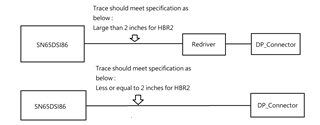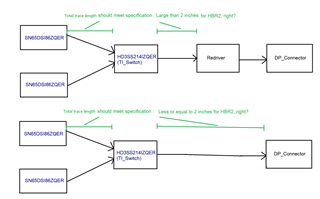Other Parts Discussed in Thread: HD3SS214
Hi TI support team
1. We know eDP impleance is 100 ohm (+-20%) from datasheet guideline.
Could we design 90 ohm (+-10%) for eDP impedance?
2. Just double checked, for eDP signal
A. eDP intra-lane match (P&N) < 5 mil
B. eDP inter-lane match < 50 mil
C. eDP_AUX intra-lane match (P&N) < 70 mil
am I right?
Thanks





